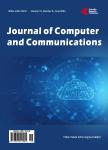Network Modelling and Visualisation Analysis of the Undergraduate Dental Curriculum System in China
Network Modelling and Visualisation Analysis of the Undergraduate Dental Curriculum System in China作者机构:Education Affairs Office West China Hospital of Stomatology Sichuan University Chengdu China College of Computer Science Sichuan University Chengdu China State Key Laboratory of Oral Diseases National Clinical Research Centre for Oral Diseases Department of Cariology and Endodontics West China Hospital of Stomatology Sichuan University Chengdu China
出 版 物:《Journal of Computer and Communications》 (电脑和通信(英文))
年 卷 期:2021年第9卷第6期
页 面:38-51页
学科分类:0502[文学-外国语言文学] 050201[文学-英语语言文学] 05[文学]
主 题:Complex Network Dental Education Curriculum Data Visualisation Educational Data Mining
摘 要:Objectives: This study aims to present the characteristics of the undergraduate dental curriculum system using network modelling and visualisation analysis based on complex network theory, thus providing a theoretical foundation for the course development and curriculum reform. Methods: The correlation coefficient was used to quantify the intensity of the correlation between courses, and a visualisation complex network of the dental curriculum was built to explore the curriculum pattern from a dynamic perspective. Further, the statistical measurements of curriculum network were adopted to express the most relevant topological features. Subsequently, the minimum spanning tree and parallel coordinates plot were drawn to explore the curriculum community structure, quantify the key courses, and present different courses in time and space relationships. Results: The correlation analysis results show that the courses are closely related to each other. The main courses focus on pathology, pathophysiology, oral anatomy and physiology, closely connecting almost all medicine-related courses. The whole course network has an average degree value of 41.53, and a clustering coefficient of 0.78, indicating an obvious small-world characteristic. From the perspective of curriculum attributes, the number of public and theoretical courses was more than that of skills and practical courses. Moreover, the academic performance of skills and practical courses was lower than that of public and theoretical courses. Conclusion: The undergraduate dental courses have a progressive structure from basic professional knowledge to professional skills, which is reasonable for the dental education in China. However, some efforts towards curriculum reform based on this study are needed.



